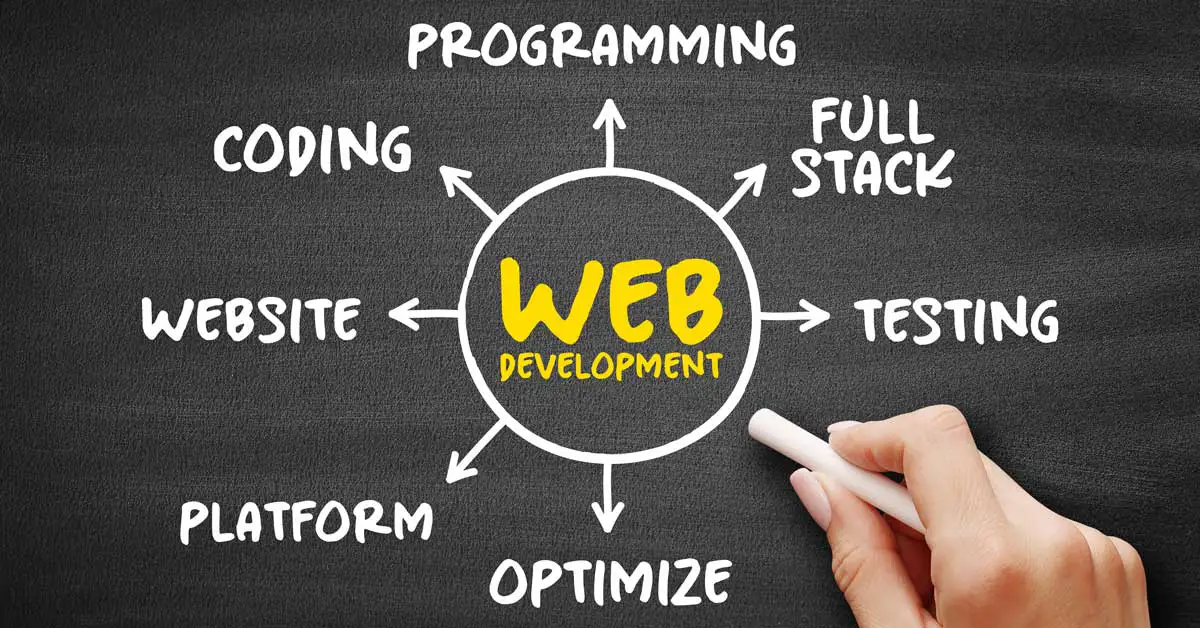In today’s fast-paced world of web development, the selection of programming languages is crucial as it forms the cornerstone of creating robust, scalable, and feature-rich web applications. In this blog post, we will touch on the top web development languages that are used today, their effects, and some real-world examples.
Python: (Back-end)
Python, an open-source, back-end language, has gained immense popularity in 2023. Its hallmark lies in its readability and simplicity. Python supports an array of programming concepts, including object-oriented programming (OOP), functional programming, and structured programming. Coupled with extensive libraries and frameworks, Python emerges as a powerhouse for technologies such as Machine Learning, Data Science, and Artificial Intelligence.
Python: Instagram – As a social media behemoth, Instagram demands an efficient, robust, and secure backend to manage vast user interactions, data storage mechanisms, and server-side functionalities. To meet this demand, Instagram turns to Django – a high-level Python web framework known for its scalability and power. Django serves as the backbone of Instagram’s server-side execution, ensuring smooth operability and flexibility.

PHP: (Back-end)
As an open-source scripting language, PHP is renowned for its role in server-side execution and the creation of dynamic web pages. It integrates seamlessly with HTML scripts and tags, supports major databases like MySQL, and boasts in-built error reporting constants.
PHP: Facebook, Etsy, Slack, and Tumblr – Facebook originally developed PHP to maintain its server-side logic. WordPress is also powered by PHP allowing compatibility with Apache and Linux making it versatile and widespread. Companies like Etsy, Slack, and Tumblr also utilize PHP for their backend development. Its quick development capabilities and extensive database support make it a suitable choice for small to large-scale web applications.
C#: (Back-end)
Microsoft’s C# is an object-oriented programming language, developed specifically for the .NET framework and Windows applications. Initially focused on Windows, it has expanded to Android, iOS, and Linux platforms. Known for game and mobile application development, C# boasts type-safety coding, scalability, robustness, and interoperability.
C#: Microsoft – Websites like Stack Overflow utilize C# for various web and software development projects. Its strong-typed nature, advanced debugging and error handling capabilities, and integration with the .NET framework make it an ideal choice for building secure, scalable, and stable web applications.

Ruby: (Back-end)
Ruby, a widely used object-oriented backend language, is often associated with the Rails framework, aptly named Ruby on Rails. Known for its dynamic features, Ruby supports dynamic and duck typing, making it one of the more flexible and dynamic languages out there today.
Ruby: Github, Version Control, Airbnb – Is used by companies like GitHub, and Airbnb. Ruby on Rails, a framework built for the Ruby language, aids in rapid web development with its conventions over configuration approach. Its easy-to-learn syntax, vast community support, and scalability make it a popular choice among startups and established companies alike.
HTML 5 and CSS3: (Front-end)
HTML 5 and CSS3 are the essential building blocks for creating visually appealing and responsive websites. HTML provides the structure, while CSS adds style and design elements to web pages. In combination, these two technologies enable developers to create engaging and user-friendly interfaces that work seamlessly across different devices.
HTML 5 and CSS3: Apple – Renowned for its minimalist aesthetics and user-friendly interfaces, Apple also utilizes the robust capabilities of HTML 5 and CSS3 in crafting its websites. This application of these languages lets Apple ensure a uniform design language across its various online platforms.
JavaScript: (Front-end)
JavaScript (JS) stands as a versatile language used for both frontend and backend web development. In 2023, it remains one of the top web development languages, facilitating the development of dynamic web elements and heightening user interactivity. JavaScript can validate user inputs, informing them about incorrect data and required fields in forms. It comes with predefined functions for handling date and time and can detect the user’s operating system and browser information. Modern features like arrow functions, template literals, and property shorthand further enhance its capabilities.
JavaScript: Facebook – The global social media giant, heavily depends on JavaScript for infusing dynamic and interactive attributes across its platform. From powering real-time updates in the news feed to instant messaging and complex video streaming capabilities – the role of JavaScript in Facebook’s platform can’t be overstated.

React JS: (Front-end)
React JS, maintained by Facebook and a community of individual developers, is an open-source JavaScript library for building user interfaces (UIs) quickly. Considered one of the best frontend languages in 2023, its hallmark features include reusable components, server-side rendering support with Next.js framework, virtual DOM manipulation for efficient page updates and smooth animations, and enhanced developer tools.
React JS: Netflix – The entertainment giant uses React JS on its platform due to its startup speed, runtime performance, and modularity. Its dynamic components and fast rendering make it a perfect fit for Netflix’s constantly updating content.
Angular: (Front-end)
Angular, a front-end, Model-View-Controller (MVC) framework that uses TypeScript as its programming language, is developed and maintained by Google. Angular is ideal for constructing intricate and single-page web applications. It employs DOM structure, updates the tree structure of HTML tags, and supports TypeScript, enhancing syntactic structure and codebase maintainability. Angular implements bi-directional data binding, allowing for dynamic updates between DOM states and UI elements. Furthermore, it integrates with testing frameworks like Jasmine and task-runners like Karma.
Angular: Microsoft – The tech heavyweight, adopts Angular for developing various applications, including parts of its Office 365 suite and other web services. The framework’s robust capabilities augment Microsoft’s offerings, ensuring smooth interactions and efficient navigation.

VueJS: (Front-end)
VueJS, an open-source, beginner-friendly frontend language for single-page web applications, amalgamates features from both Angular and React, offering a flexible and accessible framework. VueJS uses virtual DOM, data binding, and event handling for seamless interactivity. It allows transitions to be applied to HTML elements and supports third-party animation libraries. VueJS also utilizes pre-built directives (e.g., v-else, v-if, v-show) for efficient frontend actions and provides a vue-router for routing purposes and watchers for managing data changes.
VueJS: Grammarly – Incorporates Vue.js in its web applications. This integration provides users with a seamless and interactive writing experience. It ensures effective real-time feedback and suggestions, fostering enhanced writing proficiency.
Challenges and Opportunities:
Obstacles involve dealing with language-specific vulnerabilities, compatibility issues, and scalability concerns. There’s a world of opportunities in the ongoing evolution of these languages, the emergence of new frameworks, and the growth of community support. Regular updates, libraries, and forums facilitate a language’s evolution and ease its integration with new technologies. With the right skills and an open mindset, developers can navigate through these challenges and capitalize on the opportunities presented by web programming languages.

Future Possibilities :
The future of web programming languages is brimming with potential. The combining of languages with emerging technologies like blockchain, augmented reality, and the Internet of Things heralds new horizons for innovation. Moreover, the creation of efficient and scalable frameworks will keep influencing the future of web development. Developers need to stay current with industry trends and keep honing their skills to adapt to these changes and shape the future of web development. Overall, the future looks bright for these core web programming languages as they continue to evolve and play a vital role in driving digital transformation.
Web programming languages are not just tools, but architects that shape the digital landscape. They are instrumental in driving innovation and enhancing the interactive nature of web applications, with industry leaders like Google and Facebook serving as prime examples. Understanding the impacts of each unique language and staying abreast with emerging technologies has become imperative for developers.
The future of the digital experience is being molded by both frontend and backend web development languages. Their unique advantages, coupled with an understanding of evolving technologies, enable developers to deliver robust, quality applications that meet the ever-growing user demands. As the digital transformation of industries progresses, these languages are poised to continue playing an undeniably central role. Conclusively, the choice of a web development language is a critical decision influenced by factors such as scalability, security, and specific application requirements. As the digital landscape evolves, these languages remain at the heart of it, driving forward innovation and opportunity in web application development.

